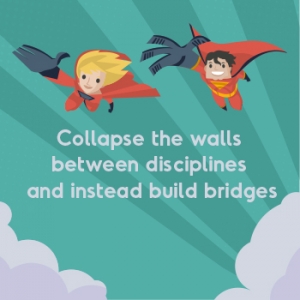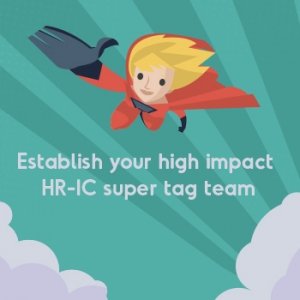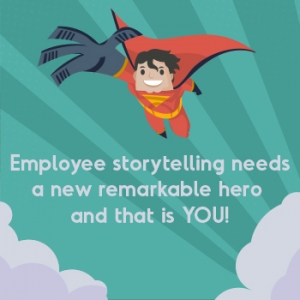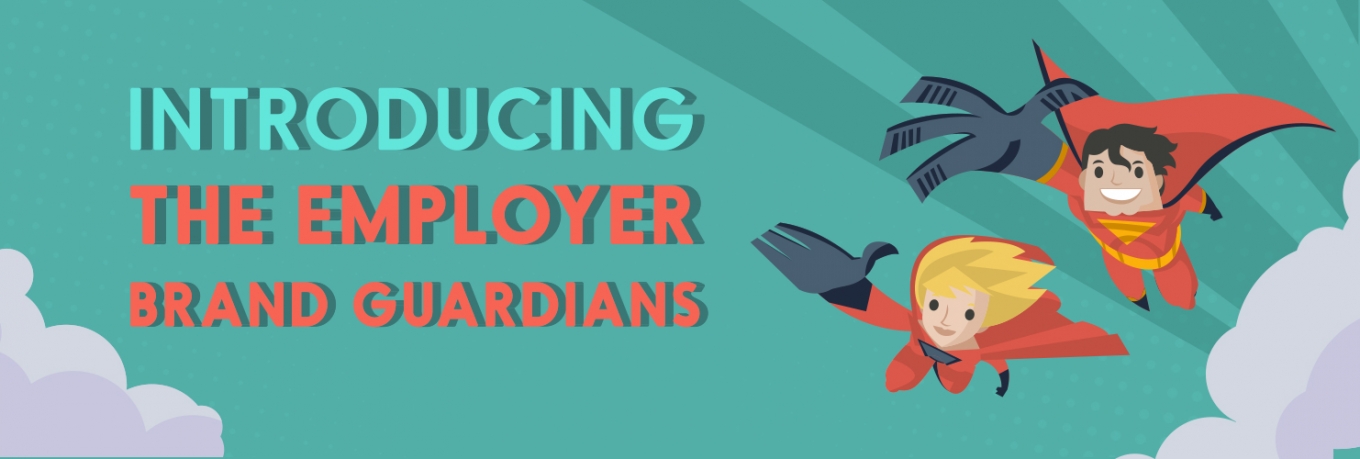In overcrowded external and internal markets, the struggle to stand out, create value and remain relevant is a daily grind.
The quest for that edge, point of difference or badge of the remarkable is constant and relentless. The pressure is causing chilly drips of perspiration to trickle down collective hairlines…
Today, your employer brand is a key ingredient in creating that ‘edge’ formula. Until the robots or Artificial Intelligence (AI) have taken over, your employees contribute significantly to your point of difference and business success.
Who will champion the employer brand? Marketing? HR? PR? Internal Comms?
It is high time you throw out the old script
The truth is that in our highly networked, super connected reality, the lines are blurred between Marketing, PR, HR and IC.
Engaging in a brand turf war over who owns what piece of the organisation’s brand territory is a road to ruin. You will become a liability to the business and a menace to the community you are meant to serve.
In reality, an individual can be your customer, your investor and your employee all at the same time.
It is increasingly common for Marketing, PR, IC and HR to build a relationship with the same individual depending on the nature of the engagement with the organisation. Squabbling to secure influence and silo-thinking will herald disaster.
But the employer brand still needs a champion.
How to be your employer brand’s guardian
It is time for a (r)evolutionary mind shift from obsessing about brand ownership to stewarding the brand experience at different connection points.
This calls for stepping out of your comfort zone.
Step 1: Collapse the walls between disciplines and instead build bridges.
Step 2: Connect new bridges with lashings of joined-up thinking between external and internal focused brand partners.
Step 3: Create a new paradigm for value through coexistence and collaboration across the 4 spheres of expertise.
- Marketing and PR lead external brand experience guardianship (customers, guests, investor relationships)
- HR and IC lead the internal brand experience guardianship (employee relationships).
There is no need for HR and IC to play second fiddle to their cousins in PR and Marketing.
Here is why.
Transformational change in the way organisations are structured is shaking up our understanding of the employee-employer relationship and its value to the business.
People want to feel heard, cared for and valued. They want work that makes them feel fully human and less of a ‘human capital asset’ or ‘resource’. Employees want to be seen and treated as individuals whilst being a member of a vibrant community. They want to rally behind an idea or mission that is in tune with their own values and ideals.
Stop entertaining the employer brand’s moniker as the consumer brand’s poor unsophisticated country bumpkin cousin. Stop envying Marketing and PR. Sure, being labelled a profit-generating centre instead of a cost-sucking centre definitely has its perks. But start delivering what matters to the business and the employee community; and hello ‘value-centre’.
Tell me, what is the condition and reputation of your employer brand?
Look around you. Locate the fault lines and get to work. Fix broken, rickety, make-do processes and communication channels that disconnect employees from the business. HR and IC are perfectly placed to position employees at the centre of the organisation’s employment offering.
Here is how you can make a difference.
Employee storytelling needs a remarkable new hero
Never underestimate the value of stories nor take the power of storytelling lightly.
Marketing and PR are already capitalising on the power of storytelling to enhance the customer experience at every touch point of the customers’ contact with the organisation’s product / service brand.
It is true that great strides have been made, particularly in recruitment marketing. The employees’ experiences and their unique stories are increasingly used to great effect in employer brand messaging across traditional and digital media.
But now the stage is set for a brand new hero – a high impact HR-IC super tag team who uses storytelling to connect with the wider employee community in a meaningful way.
Here are 3 essentials to set you on the right storytelling path
-
THE ROLES
The Hero: Starting out as a candidate, the employee is the hero of the story. The heroic character undergoes a transformation through experiencing, connecting and learning at each stage of their journey within the organisation.
The Narrator: HR and IC create stories from the perspective of the organisation but written to give the employee maximum opportunity to perform the star role as the hero. A committed narrator constantly reviews the organisation’s script to ensure that the employee is doing work that matters and makes a difference. Depending on their area of expertise, they edit and rewrite processes to ensure that the employees’ activities contribute value to the business and has meaning for individual members of the employee community.
Critical areas ripe for regular review and edit are:-
- Recruitment Marketing
- Employee Selection
- Induction / Orientation
- Job Descriptions / Role Design
- Organisation / Business Performance Communication
- Employee Performance Management and Assessment
- Meetings and Internal Messaging
- Learning and Development Activities
- Employee Engagement and Advocacy
Savvy HR and IC pros skilfully use a variety of communication styles to share, reinforce, change and narrate stories relevant to the employee community.
-
SETTING THE SCENE
The Stage: The organisation’s culture.
The Quest: To fulfill the organisation’s purpose and help employees achieve their personal dreams and professional aspirations.
-
STORY-CRAFTING
Storytelling: It is easy to become enamoured with telling your story and dreaming up creative ways to deliver your message. Of course it is important; but it is only one part of crafting meaningful stories that connect people. Storytelling without listening is merely self-serving broadcasting.
Story-listening: You want to ensure that your story has been accurately received.
- How did it make your audience feel?
- Did your employees take the action you had intended?
- What processes did you use to enable your employees to share their thoughts, feelings or contribute their ideas?
Be genuine in your interest to listen and discover what matters to your employees. You will be able to reframe the organisation’s stories so they have meaning to them. Authentic messages that resonate with personal values and aspirations increase the chances that your employee will feel motivated to gift their energy and contribute their skills to the organisation.
Story-Connecting: Once you have discovered what matters to your employees, their strengths, interests and aspirations for personal growth you are ready for your next story-crafting challenge. As the HR-IC tag team you must then carefully align and connect the employee’s story with the organisation’s purpose. True story-connecting artistry is best demonstrated when there is a near perfect match between the employee’s personal purpose and that of the organisation.
Story Co-creating: Story-connecting sets the stage for enhanced levels of employee engagement and advocacy that serves to help both the employee and the organisation develop and grow.
Calling all HR and IC pros, combine forces to form a super tag team – The Employer Brand Guardians
HR and IC can create value and make a difference to the business by re-imagining creaky industrial-era heirloom processes and redesigning the least beloved contact points in an employee’s journey with the organisation.
Employee storytelling needs a new remarkable hero and that is YOU!
How are you practicing story crafting and using employee stories in your organisation?
What are the most creative and successful ways you know of employee storytelling being used in an organisation?
Nicole Antonio-Gadsdon is an advocate of the craft of Creative HR and a radical activist for putting the ‘human’ before the ‘resources’ and cross-discipline collaboration.
She is particularly fond of ruffling Establishment feathers to help revolutionise HR as a valuable business discipline.
Her main purpose is to help organisations and HR pros transform from blah to cooking with gas through her company Aquarius Human Resources Consulting Ltd.
Nicole writes stories about her Creative HR journey and shares tips and discoveries in her blog The HR Rabbit Hole and on Twitter.
















